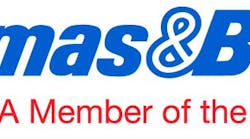Mobile apps provide full access to a company’s wealth of products, applications and industry information and insight, as well as distributor services and multimedia presentations. WWD Managing Editor Elisabeth Lisican recently spoke with Mark Nowak, vertical market development manager, water/wastewater and civil infrastructure markets, Thomas & Betts, about why apps make sense for water and sanitary districts.
Lisican: How can mobile apps aid in specification and procurement for water treatment operations?
Nowak: Mobile apps are extremely valuable in water treatment operations because they make a library of information available to the user. Product and application information is easily found with touch screen navigation and search functions, allowing the user to identify the most appropriate product to specify or procure. The mobility allows the user to access this information, as well as instructional or informational videos, without being tethered to a desk. This can be especially helpful when the user is in a plant environment, in need of specific information.
Lisican: How is this trend evolving for water and sanitary districts, which are slightly behind the energy market?
Nowak: Over time, more and more mobile apps will be available from a wider group of manufacturers and wholesale distributors. It also can be expected that services, such as equipment monitoring and diagnostics, also will become much more readily available in mobile applications.
Lisican: What best practices should water and sanitary districts keep in mind when implementing mobile apps?
Nowak: Every district should spend sufficient time mapping out how it will use its mobile apps and what expectations it has in terms of value, functionality, connectivity and other matters. There also are many decisions that a district will need to make before investing in any mobile devices, such as whether or not to pay for cellular service, which model/manufacturer of tablet to use, and whether any functions of the tablet/smart phone will be restricted from employees.
Lisican: What do you predict is in store for the future of this trend?
Nowak: Many things can be expected in the future that will only increase the value of mobile apps for water treatment districts, such as:
- • Faster tablets and smartphones with greater memory, providing for more vigorous content;
- • More multimedia content, such as videos and podcasts; and
- • More interactivity for training, access to product specialists, blogs and online Q&As.
Lisican: How can we communicate the value of mobile apps to industry members who are unfamiliar with them?
Nowak: First of all, it is important to make the apps available for free; people are far less likely to be interested in using them if they must pay for them.
The most effective means of communicating an app’s value is through word of mouth. When people are impressed with the convenience that a particular app provides, they are inclined to tell their friends and colleagues about it. At trade conferences and expos, it can be part of a presentation or booth exhibit, which will encourage further conversations. Another effective method of communicating an app’s value is through Internet search engines like Google, because many people will conduct a search when they are looking for a specific app. Search engine optimization will increase the likelihood of people finding an app through an online search. If there is an article online about the benefits of a particular app, especially if it is a case study coauthored by a user, it can be very effective.
Download: Here


